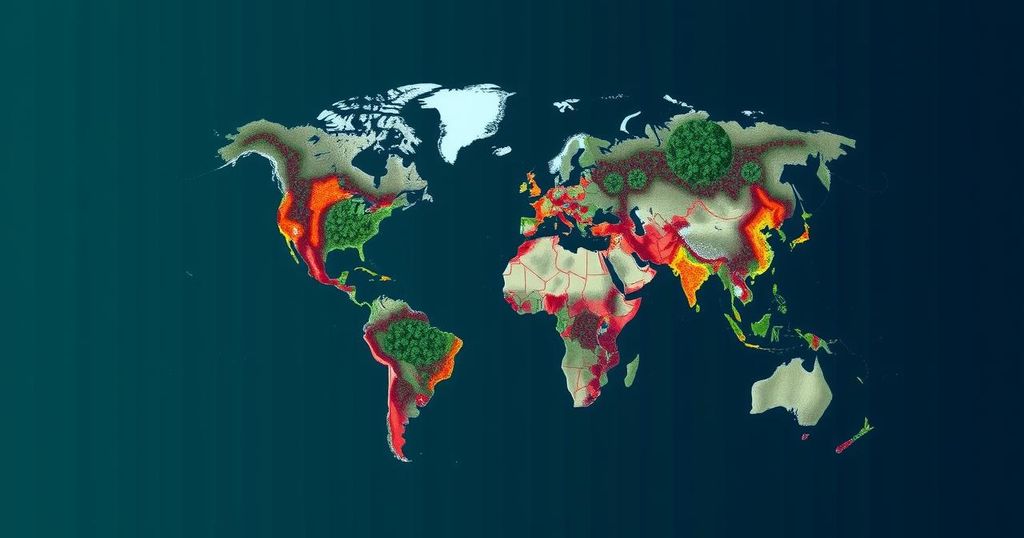UNEP Urges Nations to Close Emissions Gap to Combat Climate Change

The United Nations Environment Programme (UNEP) calls for immediate action to close the emissions gap in climate pledges, advocating for a 42 percent reduction in greenhouse gas emissions by 2030 to limit global warming to 1.5 degrees Celsius. The report emphasizes the vital role of renewable energy and reforestation in achieving these targets, while also warning of increasing emissions trends that threaten global climate stability.
The United Nations Environment Programme (UNEP) has called on nations to urgently address the significant emissions gap evident in their climate pledges. In the Emissions Gap Report 2024, titled “No More Hot Air…Please,” UNEP urged countries to collectively aim for a 42 percent reduction in annual greenhouse gas emissions by the year 2030 to mitigate the dire consequences of global warming. This report indicates that maintaining global temperature increases within the 1.5 degrees Celsius limit established by the Paris Agreement is feasible, contingent on an ongoing transition to cleaner energy sources and habitat restoration. Inger Andersen, the Executive Director of UNEP, emphasized the vital importance of adhering to carbon reduction commitments to prevent disasters associated with climate change, which may include severe floods, droughts, cyclones, and wildfires. She stated, “Every fraction of a degree avoided counts in terms of lives saved, economies protected, damages avoided, biodiversity conserved and the ability to rapidly bring down any temperature overshoot.” As we approach the UN Climate Change Conference in Baku this coming November, the report highlights alarming data indicating that greenhouse gas emissions have soared to a historic peak of 57.1 gigatons of carbon dioxide since 2019. Moreover, the report notes that advancements in wind and solar technologies could contribute to 27 percent of the potential emissions reduction by 2030, escalating to 38 percent by 2035. The cessation of deforestation and implementing substantial measures across sectors such as transportation, construction, and industry are crucial for reaching established carbon reduction targets.
The Emissions Gap Report is an annual publication by the United Nations Environment Programme designed to assess the difference between where global greenhouse gas emissions are heading and where they need to be to maintain global temperature rises within safe limits. This year’s report emphasizes the urgent need for countries to intensify efforts to meet climate targets, especially in light of ongoing debates about climate policies and international agreements, such as the Paris Climate Accord. The context of the report arises from observable increases in emissions and the heightened frequency of climate-related disasters, underscoring the need for collective global action.
In conclusion, the UNEP’s Emissions Gap Report for 2024 highlights the pressing need for countries to enhance their climate commitments to close the emissions gap. The report’s call for a 42 percent reduction in greenhouse gas emissions by 2030 serves as a stark reminder that proactive measures, including the adoption of renewable technologies and prevention of deforestation, are vital to avert the catastrophic fallout of climate change. The urgent message from UNEP is a clarion call for nations to act decisively and collaboratively to secure a sustainable future for the planet and its inhabitants.
Original Source: www.socialnews.xyz






